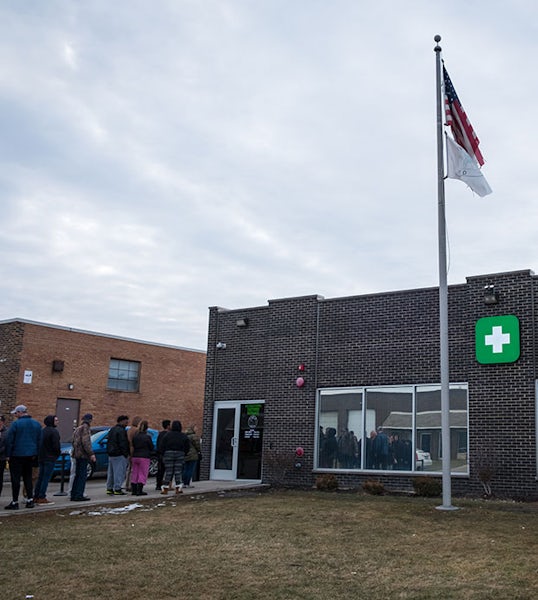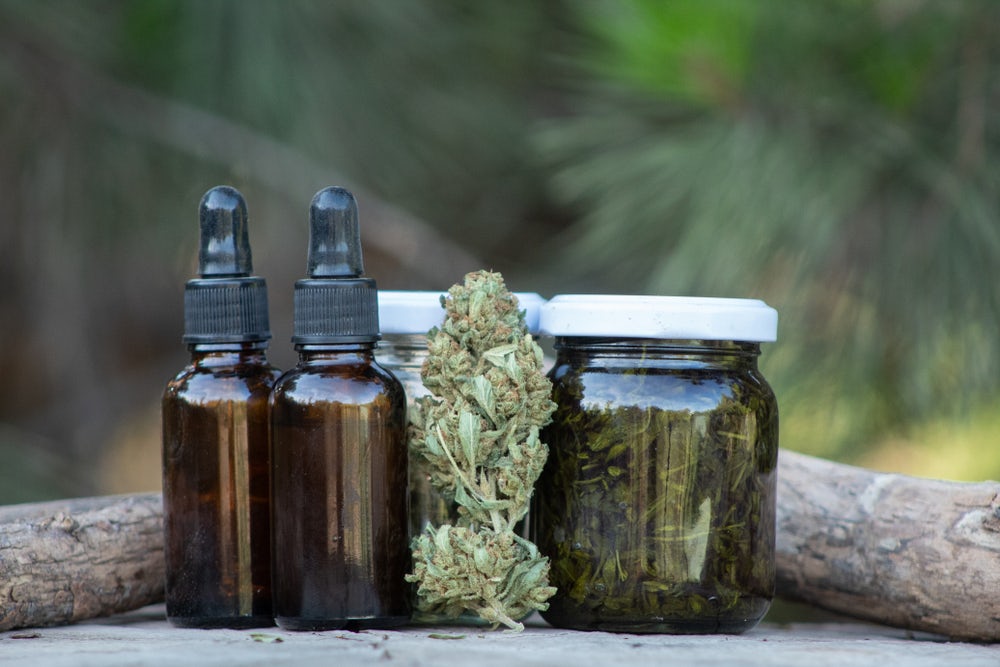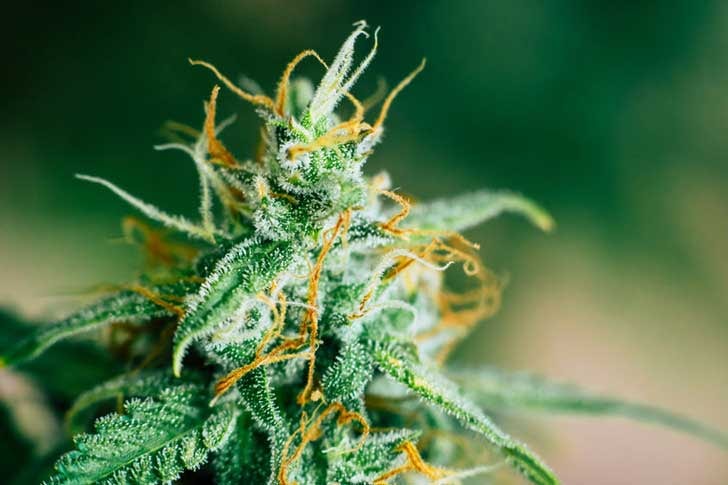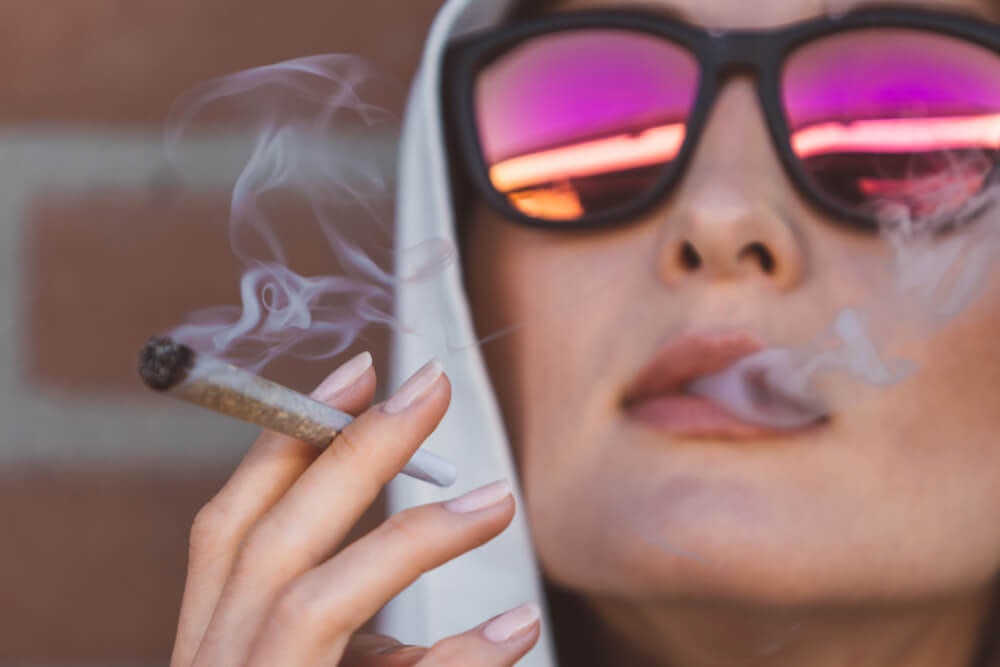Legal marijuana shortages in Illinois are expected to last six months to a year or more, industry members warn, due to a lack of production capacity in the state.
The long lines, product shortages and store closures seen since the state authorized legal sales starting on New Year’s Day are not unusual for newly legal markets. But the tight market is expected to continue longer than in other states in part because Illinois has only 21 cultivation warehouses, far fewer than in many other states with legal cannabis.
The limit on the number of growers is a result of existing medical marijuana growers maintaining that they could supply the market without any new cultivation licenses — despite studies that predicted they could not meet the demand.
Shortages also stem from other factors, including the state’s previously small but rapidly growing medical market, the limited number of stores and having just six months to prepare.
One of the chief sponsors of the law, state Sen. Heather Steans, said initial shortages were to be expected following similar experiences in other states.
“Hopefully, within six months or a year or two, the supply gets ramped up so you’re not having the same challenges,” Steans said. “There’s an initial burst of excitement from the public, so some of it is the nature of the beast.”
In other states, while severe scarcities dissipated within days or weeks of the initial rush, in some cases it still took months to ramp up production to meet demand.
As in Illinois, at least one shop in Colorado ran out of weed within days of legalization in January 2014. A study showed the legal industry was supplying only about two-thirds of the total demand that first year, with the rest coming from the illicit market. But the outages were largely ironed out by springtime, and the state has since reached more of a balance between supply and demand, said Jim Burack, director of Colorado’s Marijuana Enforcement Division.
The key difference with Illinois is that Colorado started its program with about 200 growers, almost 10 times as many as in Illinois. The Rocky Mountain State also opened with about 145 licensed retail shops, compared with only 37 operating retail stores in Illinois. Colorado now has hundreds of growers and shops.
Elsewhere, other factors have slowed the rollout of legalization. When California required growers to meet new testing requirements for potency and pesticides in 2018 and 2019, news media reported, increases in testing wait times and test failures caused a product shortage. Once the labs expanded capacity and cultivators were able to conform with the more stringent requirements, the supply caught up.
Washington opened its retail pot program in 2014 with only about 20 stores, initially causing long lines, widespread shortages and high prices. But it had about 80 growers, and its market stabilized after more licenses were issued quickly, said Brian Smith, spokesman for the Washington State Liquor and Cannabis Board.
People initially thought the program had failed, but now the state has 1,100 growers and 500 or so stores, supplies have surged and prices have dropped steadily, Smith said.
He urged patience with the market. “There were a lot of people overreacting to how we got started,” Smith said.
In Canada, which started legal pot sales of flower in October 2018, some stores began running out of product within hours. Shortages were still rampant weeks later, and provinces limited hours of operation or cut off issuing new licenses.
Late last year, Canada allowed cannabis edibles, vaping products and extracts for the first time. Yet news reports, blaming slow and strict regulatory enforcement, say it could be two years or more before Canada gets an adequate supply.
Given the history elsewhere, analysts saw supply problems coming to the Midwest. A study of the Illinois market commissioned by lawmakers last year predicted that existing growers could meet only about half of peak demand for legal weed. Even growers and lawmakers warned there would be a lack of supply. But the Medical Cannabis Alliance of Illinois, representing the industry, convinced lawmakers there was no need for new full-size licenses.
Pam Althoff, executive director of the Cannabis Business Association of Illinois, predicted that legal growers could meet demand before new licenses are issued in May. “There’s always bumps with new things, but I think it’s going extraordinarily well,” she said.
Many factors worked against meeting the demand immediately, she said. Cultivators wanted to begin legalization in April to have time to ramp up production, but lawmakers wanted to start Jan. 1, she said. Also last year, the number of medical cannabis patients roughly doubled, increasing demand and causing shortages even before legalization.
It took months for growers to get permission to expand and start growing, with some not licensed until Dec. 23. It takes about four months to grow and process cannabis, so Althoff hopes new crops will be harvested by spring.
Other industry members are not so optimistic. Growers note the entire process of getting permits, building or expanding a warehouse, and producing a crop can take a year or more. One medical cultivator only started growing last year, four years after medical pot licenses were issued.
Lawmakers authorized up to 40 new small “craft” growers, initially limited to 5,000 square feet, compared with 210,000 square feet for existing growers. But those craft grower licenses aren’t required to be approved until July 1, while 75 new stores will be approved by May 1.
Business applicants will get bonus points toward a license if they are “social equity” applicants, meaning people who have been disproportionately hurt by the war on drugs, including those from poor areas or those who’ve been arrested for low-level pot offenses.
Social equity applicants also will pay half the licensing fees and will be eligible for startup loans. Those loans will be financed by the licensing fees paid by existing businesses — that’s partly why the law allowed the medical shops to open first, Steans said. In addition, state regulators had already done background checks on the existing growers and shops, whereas new licensees will have to undergo extensive vetting.
On the other side of the equation, demand for legal cannabis in the first week of sales in Illinois was among the highest of any state, with $20 million sold in the first 12 days. Even before recreational sales started, medical cannabis patients were stocking up, in some cases clearing out products at dispensaries.
State marijuana czar Toi Hutchinson noted the strong sales and pointed out that Illinois had far more stores than its nearest competitor, Michigan, which opened its market late last year with only four shops.
In response to concerns by some medical patients that they can’t find the products they want, Hutchinson emphasized that stores are required to reserve a one-month inventory of cannabis for patients, or face fines or other discipline.
But state regulation isn’t the only issue. Compounding the problem in Illinois, some medical dispensaries have gotten state licenses to sell recreational cannabis but were prevented from selling it by local governments.
Adding another degree of difficulty, it’s not an ideal time to raise money for expansions.
The value of publicly traded cannabis companies in Canada, where marijuana is legal, has fallen to a fraction of what it was in 2018. Investors now want to see profits rather than just growth projections, industry members said, and are stingier with their money.
Because it can take a year to get a grow house up to full capacity, cannabis industry research firm New Frontier Data is not projecting a full supply in Illinois for one to two years, senior economist Beau Whitney said.
“You fix it by issuing additional licenses,“ he said. Until then, he added, “look for continued constraints on supply, higher-than-market prices and a robust illicit market.”
To preserve inventory and stay open, many retailers have imposed limits on how much customers can buy. Last week, Mission Dispensary in Chicago’s South Shore neighborhood held people to $200 maximum purchases, 4.5 grams of flower, 100 milligrams of edibles and two vaping cartridges, said Kris Krane, president of 4Front Ventures, which runs the store.
For the shortest wait times, he advised shopping on a Monday or Tuesday afternoon — after lunch but before work lets out.
“You definitely get a little grumbling, ‘I waited in line for an hour and all I could buy was this much,’ ” Krane said. “But most people are just happy they can come into a store and buy legally. They’re willing to abide by these growing pains. People might be more upset three or four months from now (if shortages continue). But we can’t grow the plants any faster.”
___
(c)2020 the Chicago Tribune. Visit the Chicago Tribune at www.chicagotribune.com Distributed by Tribune Content Agency, LLC.
Sign up for bi-weekly updates, packed full of cannabis education, recipes, and tips. Your inbox will love it.

 Shop
Shop Support
Support
















